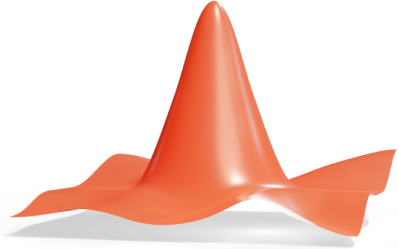How to Calculate Central Tendencies with GeoGebra
In this entry we’ll examine how to use GeoGebra to find: Minimum, maximum, quartiles, median, mode, mean and standard deviation, using a list of raw data. You can also find them individually by using commands.
The mode does not show up if you use One Variable Analysis . You have to use a command to find it instead.
GeoGebra Instruction 1
Using One Variable Analysis 
- 1.
- Open
Spreadsheetmode underViewinMenu. - 2.
- Input your data into column
A. - 3.
- Select all cells with data in them.
- 4.
- Click
One Variable Analysis.
- 5.
- Now, you’ll get a window with a chart. Click the
Show Statisticsbutton. If you can’t see the button, click the small triangle in the top right corner of the new window.
- 6.
- You’ll then get a table showing these statistics:
-
= standard deviation (population)
-
s= standard deviation (sample), -
Min= mininum, -
Max= maximum, -
Q1= the first quartile, -
Q3= the third quartile.
The median and mean are also provided.
-
GeoGebra Instruction 2
Using Commands
-
Open
Algebra ViewandSpreadsheetmode underViewinMenu. -
Enter your observations into column
AinSpreadsheetmode. Select all the cells containing data and clickListin
Toolbar. ChangeNametoDataand clickOK. The list will be saved inAlgebra View. -
To find the minimum, use the command
Min(<List>)
or
Min(<List of Data>, <List of Frequencies>)
-
To find the first quartile, use the command
Quartile1(<List of Raw Data>)
or
Quartile1(<List of Numbers>, <List of Frequencies>)
-
To find the median, use the command
Median(<List of Raw Data>)
or
Median(<List of Numbers>, <List of Frequencies>)
-
To find the third quartile, use the command
Quartile3(<List of Raw Data>)
or
Quartile3(<List of Numbers>, <List of Frequencies>)
-
To find the maximum, use the command
Max(<List>)
or
Max(<List of Data>, <List of Frequencies>)
-
To find the mode, use the command
Mode(<List of Numbers>)
-
To find the mean, use the command:
Mean(<List of Raw Data>)
-
To find the variance, use the command
Variance(<List of Numbers>)
-
To find the standard deviation, use the command
Stdev(<List of Raw Data>)
to get the standard deviation of a sample, or
Stdevp(<List of Raw Data>)
to get the standard deviation of a population.



















